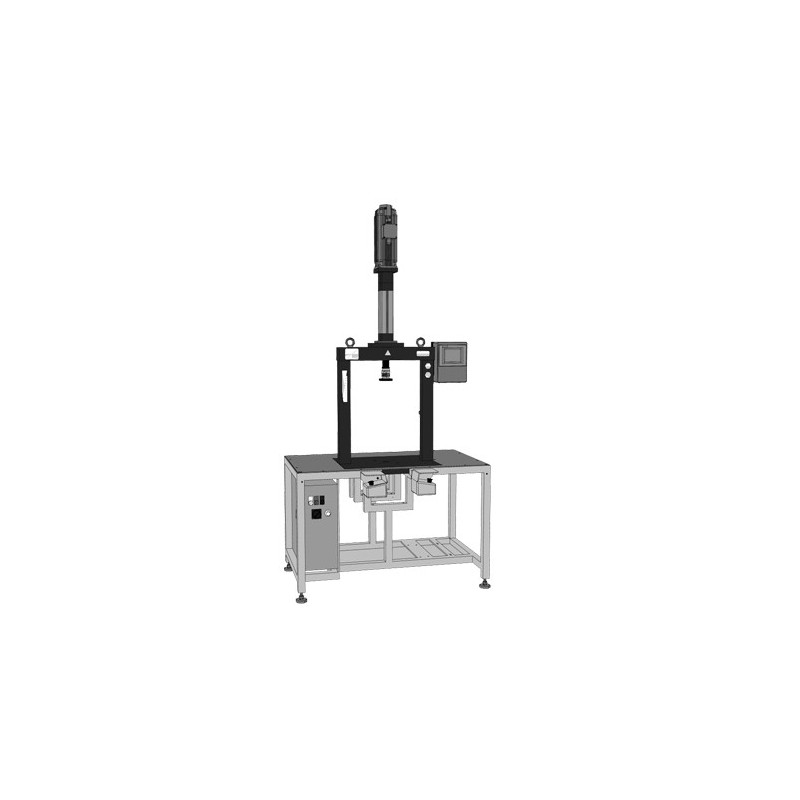

Press-in Devices in Portal Design - ROEMHELD P1.101
ROEMHELD P1.101 Press-in Devices are preferably used in assembly processes of longitudinal press and/or riveted joints, as well as pressing out and testing components.
- Max. press-in force: 7/25/55/100 kN
- Stroke: 100/200/300/400 mm
- Clear width: 350 - 540 mm
- Clear height: 200 - 600 mm
- Operation: two-hand operation
This item is now Obsolete- For Presses see Enerpac Hydraulic Presses - HYQUIP Limited or CONTACT HYQUIP with your bespoke requirements FORM.
Press-in Devices in Portal Design - ROEMHELD P1.101
- Max. press-in force: 7/25/55/100 kN
- Stroke: 100/200/300/400 mm
- Clear width: 350 - 540 mm
- Clear height: 200 - 600 mm
- Operation: two-hand operation
Advantages:
- High forces / rigid frames
- No cost and time-consuming project planning
- Easy retrofitting of functions or components
- Standardized drilling patterns for workpiece and tool holders provided by the customer
- Interchangeability of the individual elements by standardized drilling patterns
- Ergonomically designed operation
- Closed adhesion
- Reduction of assembly time
- Process safety
- Low operating noises
- Sales of individual components
- Plug & Play
- High degree of operator friendliness
- Parallel motor is possible
Application:
These press-in devices are preferably used in assembly processes for the production of longitudinal pressed joints, riveted joints as well as for pressing out and testing of components.
Description:
The base frame is designed as a working table. Below the table plate there is the electric control that controls the electrical press-in cylinder at the portal.
The steel base plate of the portal frame is installed flush with the table plate in the working table, so that the working surface is plane and edges are avoided. On the base plate any workpiece carriers such as sliding tables can be mounted.
The piston rod of the press-in cylinder is equipped with a quick-changing device, at which the press-in tools can be mounted. This can optionally be replaced by other tool holders.
Thanks to the modular design, the functions of the control as well as mechanical components can be easily exchanged or retrofitted.
The stroke measurement is made by the evaluation of the integrated rotary encoder. The force measurement (control variant 2) is made indirectly by a strain sensor at the pressin frame.
If you can’t find what you are looking for, need product pricing, delivery, technical support or associated services CONTACT HYQUIP or call our sales office +44 (0)1204 699959
| Quantity | Unit discount | You Save |
|---|


